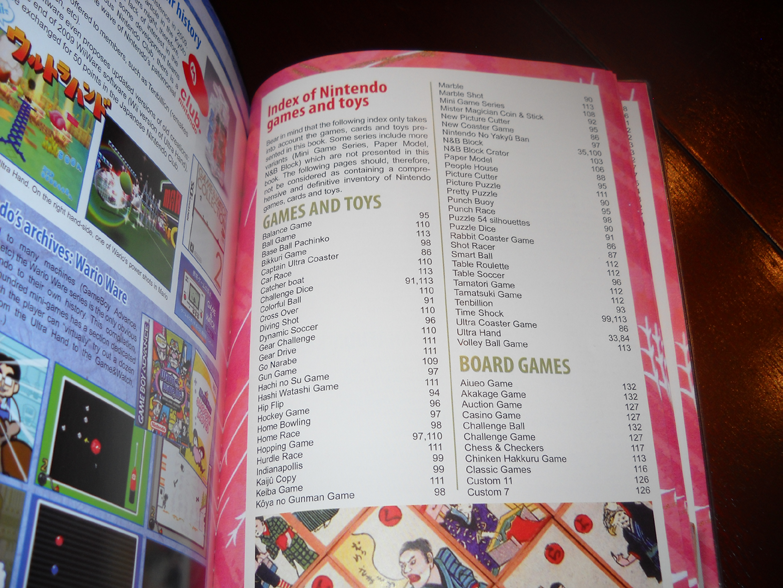1889 - 1980: From playing cards to Game & Watch
[Note: If you're thinking of purchasing this book,
read this post first.]
This book is absolutely fantastic. It describes, in detail, the origins and company history (including products, prices, etc.) from its origins all the way through the introduction of the Game & Watch (1980). And unlike a lot of books that attempt to cover these topics, it's not full of personal reminiscence, an author's subjective opinion, or other fluff. It's cold, hard, factual information. The authors, Florent Gorges and Isao Yamazaki, do a brilliant job of writing this book exactly the right way.
You will not find a more exhaustive account of Nintendo's history anywhere, save talking to the authors in person. The amount of dedication and effort put behind this book is extraordinary. And some of this information had to be so incredibly difficult to verify, let alone discover in the first place. I cannot recommend it enough. You will not find anything better. Period.
The book is separated into eight major sections:
- History of the Company (General Overview)
- Playing Cards
- Games and Toys
- Board Games
- Electronic Toys
- Other Products
- Arcade Games
- The First Game Consoles
The overview section is great, because when you usually search for the beginnings of the company, you typically get a blanket statement like, "Nintendo started as a playing cards company before moving into games. Now here's the Famicom." This book has actual in-depth information about the actual beginning of the company (i.e. people, places, events, etc.). It wouldn't be a stretch to say that Gorges and Yamazaki know just as much about the history of the company as the company itself. They could probably even give them a run for their money.




When talking about all items, the book is more than just, "Here's this toy. Here's what it was called. Here's when it was made. Next item." Instead, you get things like TV and print advertising strategies, collaborative efforts, people behind the items, where items were actually sold, measurements, actual advertisements, loads of full-color photos, stock market information, pieces of interviews, number manufactured, literal translations, press photos, anecdotes, internal materials (e.g. sales/sample books), domestic and international variants, prices, years, newspaper clippings, rarity back then and today, how they functioned, and little tidbits of other interesting information. Certain iconic and landmark toys even get multiple-page spreads.
Nintendo made
so many things. It's insane. The company has even admitted to not having all of the products that they produced over the years, and sometimes not even knowing how many of certain products and variants were actually manufactured. Besides the products that everybody pretty much knows about, the book also focuses just as much on the little-known products/services (that sometimes almost destroyed the company). You can also pick out a lot of
Yamauchi's business sense and personality from the decisions he made while leading the company forward. The fact that the book has pieces of interviews at all is rare in itself.
The book itself is in full color (except for photos where color photography hadn't originally been used). The pages are of high quality pages, and the whole book has a plastic wraparound protective sleeve. The aesthetic design and layout are superb in every sense. There are hundreds upon hundreds of photos. The last few pages briefly address all Game & Watch models (which is a perfect segue into
Volume 2), as well as as full of a list as you'll ever find of everything Nintendo made through this time period. The whole thing is such a professional job.
As stated before, I cannot recommend this book enough. But be aware that it focuses on the history of Nintendo in Japan. If you're seeking out Nintendo of America history, the best place to go is David Sheff's
Game Over: How Nintendo Conquered the World book. Note that the subtitle usually changes with each re-printing. The "Game Over" part stays the same, though.
IMPORTANT:
The publisher of this book is Pix'n Love Publishing.
However, I would avoid buying directly from them like the plague. Here's why.





























No comments:
Post a Comment